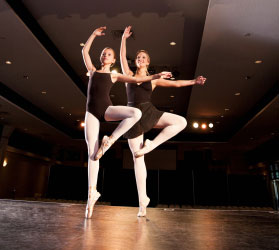- Doctors & Departments
-
Conditions & Advice
- Overview
- Conditions and Symptoms
- ¿Está enfermo su hijo?
- Parent Resources
- The Connection Journey
- Calma Un Bebé Que Llora
- Sports Articles
- Dosage Tables
- Baby Guide
-
Your Visit
- Overview
- Prepare for Your Visit
- Your Overnight Stay
- Send a Cheer Card
- Family and Patient Resources
- Patient Cost Estimate
- Insurance and Financial Resources
- Online Bill Pay
- Medical Records
- Política y procedimientos en el hospital
- Preguntamos Porque Nos Importa
-
Community
- Overview
- Addressing the Youth Mental Health Crisis
- Calendar of Events
- Child Health Advocacy
- Community Health
- Community Partners
- Corporate Relations
- Global Health
- Patient Advocacy
- Patient Stories
- Pediatric Affiliations
- Support Children’s Colorado
- Specialty Outreach Clinics
Your Support Matters
Upcoming Events
Mental Health Town Hall
martes, 23 de abril de 2024Join Children’s Hospital Colorado pediatric experts for a virtual...
-
Research & Innovation
- Overview
- Clinical Trials
- Q: Pediatric Health Advances
- Discoveries and Milestones
- Training and Internships
- Academic Affiliation
- Investigator Resources
- Funding Opportunities
- Center For Innovation
- Support Our Research
- Research Areas

It starts with a Q:
For the latest cutting-edge research, innovative collaborations and remarkable discoveries in child health, read stories from across all our areas of study in Q: Advances and Answers in Pediatric Health.


We care for patients’ growing muscles, joints and bones through sports medicine, surgery, rehabilitation and research.


Why are we experts at caring for young dancers?
At Children’s Hospital Colorado, we recognize that young dancers are not just artists, but athletes as well. We also know how the art of dance places a lot of stress on the growing body. To best care for this unique population, we have a special team of experts from the Sports Medicine Center who specialize in treatment for young and adolescent dancers. Because dance requires artistic expression and athletic performance, we work together with the dancer, family and dance teacher to help keep dancers healthy.
Watch Caroline's Story
Watch ballerina Caroline's story to learn how our Spine Program helped treat her scoliosis to keep her on the dance floor.
What is dancing’s impact on the body?
Dance is a highly demanding activity, with up to 90% of dancers experiencing some form of injury in their lifetime. Every dance performance requires extraordinary flexibility, balance, power and endurance. To execute technical movements, the body takes on positions that place a lot of stress on bones, muscles, tendons and ligaments, which can lead to high injury rates.
Who gets injuries from dance?
Injuries from dance span all ages, but the risk of injury is greatest during a young dancer’s growth spurt. This is usually between the ages of 8 to 12 for girls and 10 to 14 for boys. During this period, a child’s bones are the weakest, which places the dancer at high risk for fractures (broken bones) and stress fractures (small cracks in a bone). The growth spurt is also a time when bones are growing a lot faster than soft tissues, such as muscles. This results in tight ligaments and loss of muscle strength, which growing dancers frequently perceive as loss of flexibility and coordination.
What are common dance injuries?
Acute injuries do occur in dance, but overuse injuries are the most common because of the repetitive nature of training and performance. Overuse injuries can occur in the bone, which leads to stress fractures, or in the tendon, which leads to tendinitis. The most common dance-related injuries include:

- Foot and ankle injuries: Excessive repetitive movements in dance can lead to inflammation (swelling) in the tendons of foot and ankle joints, resulting in tendinitis. Stress fractures in the foot are also very common. Ankle sprains are seen often in ballet dancers when they go “en pointe” (on the tips of the toes). Other foot injuries include sesamoid stress injuries, hallux valgus (bunion) and hallux rigidus (stiff big toe).
- Knee injuries: Techniques requiring unique positioning of the foot and hip places repetitive stress on the knee, which can lead to overuse injuries such as anterior knee pain (patellofemoral pain) or jumper’s knee (patellar tendonitis).
- Back injuries: Spondylolysis is a very common cause of low back pain. The condition is caused by a stress fracture in the vertebrae, one of the bones that make up the spinal column. If the stress fracture occurs on both sides of the vertebrae, the bone can become weakened and unable to maintain its position. The vertebrae can then slip out of place, resulting in spondylolisthesis.
- Hip injuries: Snapping hip syndrome is frequently experienced by young dancers, and it can be painless or painful. The condition is characterized by an audible “snap,” or the feeling of a snap or click in the hip. Snapping hip is caused by movement of a muscle or tendon over a bony structure.
- Poor nutrition: Studies show that dancers consume less than 70 to 80% of the recommended daily allowance of energy intake (calories). When the body’s nutritional needs are not met, peak performance is altered as the body starts to break down muscles and bone. This places the dancer at risk for injury. Poor nutrition can also delay healing of chronic injuries and fractures.
Tips for parents and dance instructors recognize the importance of proper nutrition to prevent injury
- Be aware of the high risk of injury due to the intensity and duration of training and performances.
- Be cautious of over-training, and monitor training volume.
- Remember proper technique and sequential skill progression as crucial ways to help prevent dance injuries.
Learn more about our Sports Medicine Center.
Need Advice for Your Young Athlete?
Check out our sports articles, written by our Sports Medicine experts. You'll find advice and tips for parents, coaches, trainers and young athletes.



 720-777-0123
720-777-0123




